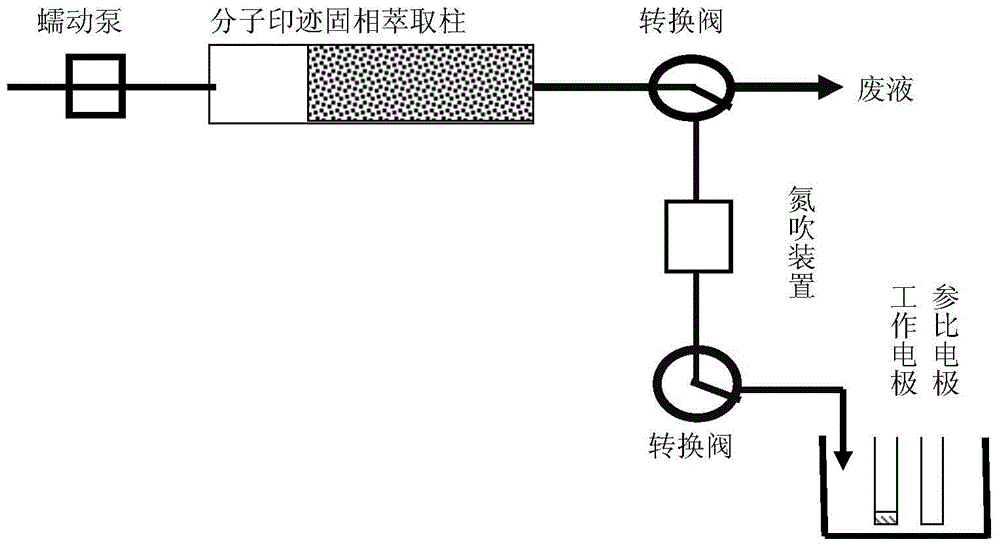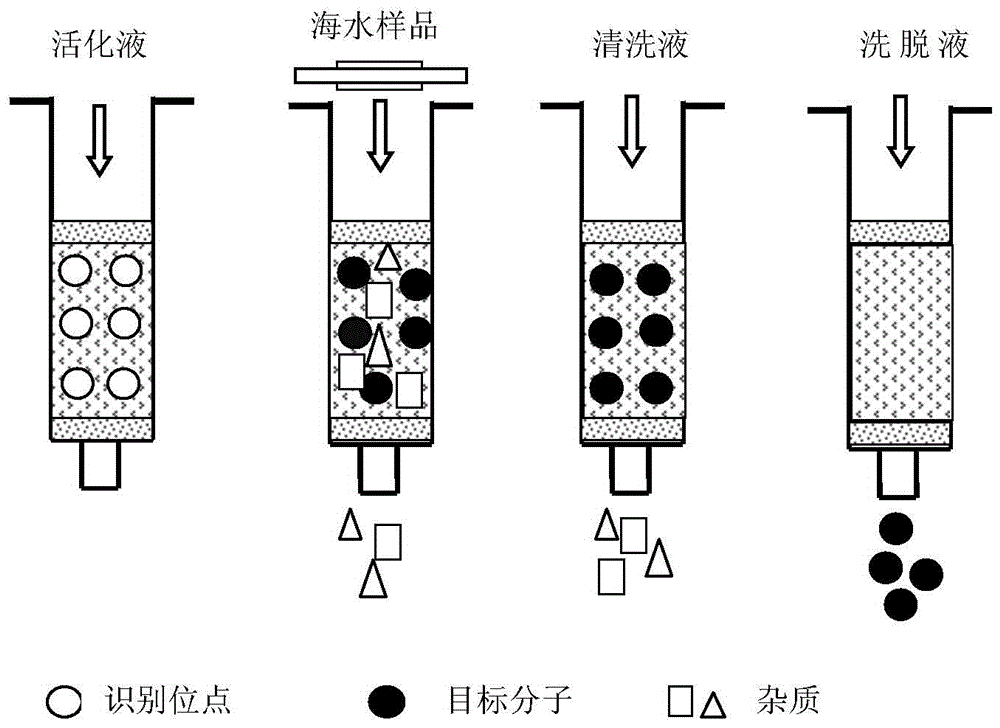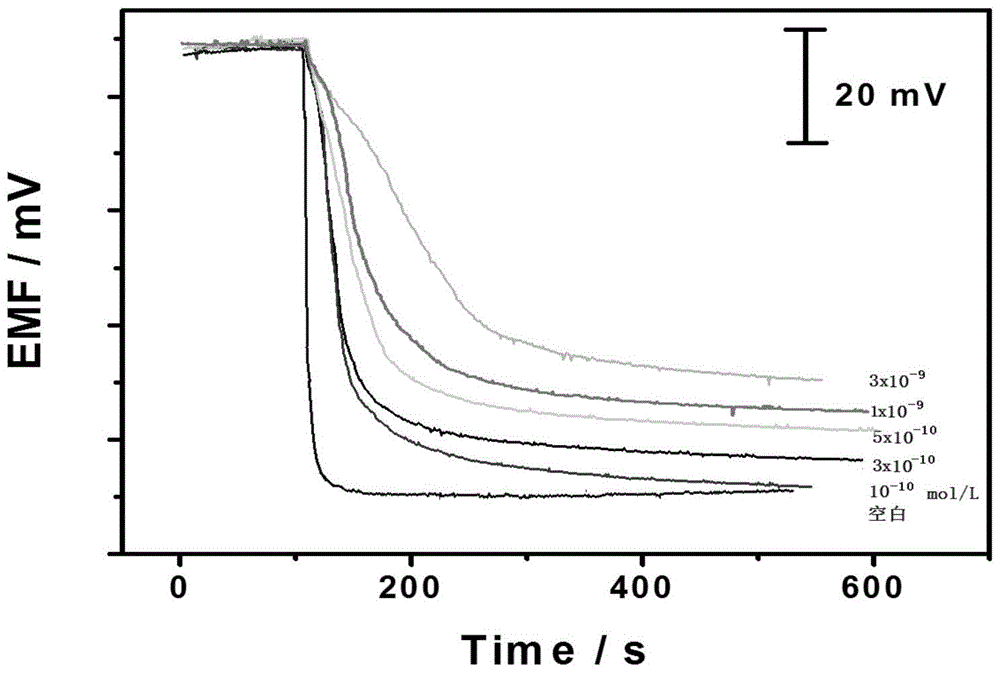A method for detecting organic pollutants by combining molecular imprinted solid phase extraction technology-potential method
A technology of organic pollutants and molecular imprinting, applied in the preparation of test samples, measuring devices, and analysis materials, etc., can solve the problems of low organic pollutant content, large sample matrix effect, and inability to directly detect organic pollutants. Achieve simple operation, simplify the sample pretreatment process, and eliminate the effect of sample matrix
- Summary
- Abstract
- Description
- Claims
- Application Information
AI Technical Summary
Problems solved by technology
Method used
Image
Examples
Embodiment 1
[0030] Take the detection of the organic pollutant molecule chlorpyrifos in seawater as an example. The specific detection steps are as follows:
[0031] 1. Preparation of chlorpyrifos molecularly imprinted solid-phase extraction filler:
[0032] Mix 2.7mM chlorpyrifos and 10.7mM methacrylic acid and let it stand for 1 hour, add 75.2mM ethylene glycol dimethacrylate, 40mL acetonitrile, 1.2mM azobisisobutyronitrile, ultrasonic 5-10min to make it evenly mixed, and then add to The mixture was sealed after passing nitrogen gas for 10 minutes, and polymerized in a constant temperature oil bath at 75° C. for 24 hours to obtain a white blocky polymer. The white blocky polymer was vacuum-dried at constant temperature at 45°C for 24 hours, ground and sieved, and the particles above 300 mesh were extracted and eluted by methanol or acetonitrile until the eluate had no absorption at λ=228.7nm in the ultraviolet absorption spectrum. The chlorpyrifos molecularly imprinted polymer is obta...
Embodiment 2
[0043] Take the detection of benzo(a)pyrene pollutants in tap water by the present invention as an example.
[0044] Take tap water to configure two spiked samples, the concentration is 1×10 -9 mol / l and 2.5×10 -9 mol / l, according to the steps 1, 2, 3 and 4 in Example 1 to measure the potential change rate signal, refer to the standard working curve, and compare the sample signal in tap water with the standard working curve to obtain benzo(a)pyrene pollution in tap water substance concentration.
Embodiment 3
[0046] Take the detection of benzo(a)pyrene pollutants in seawater by the present invention as an example.
[0047] Get the seawater sample filtered by 0.45 micron glass fiber membrane in advance, measure the potential change rate signal according to the steps 1, 2, 3 and 4 of Example 1, refer to the standard working curve, and compare the signal of the sample in seawater with the standard working curve to obtain Concentrations of benzo(a)pyrene pollutants in seawater.
PUM
| Property | Measurement | Unit |
|---|---|---|
| particle diameter | aaaaa | aaaaa |
Abstract
Description
Claims
Application Information
 Login to View More
Login to View More - R&D
- Intellectual Property
- Life Sciences
- Materials
- Tech Scout
- Unparalleled Data Quality
- Higher Quality Content
- 60% Fewer Hallucinations
Browse by: Latest US Patents, China's latest patents, Technical Efficacy Thesaurus, Application Domain, Technology Topic, Popular Technical Reports.
© 2025 PatSnap. All rights reserved.Legal|Privacy policy|Modern Slavery Act Transparency Statement|Sitemap|About US| Contact US: help@patsnap.com



